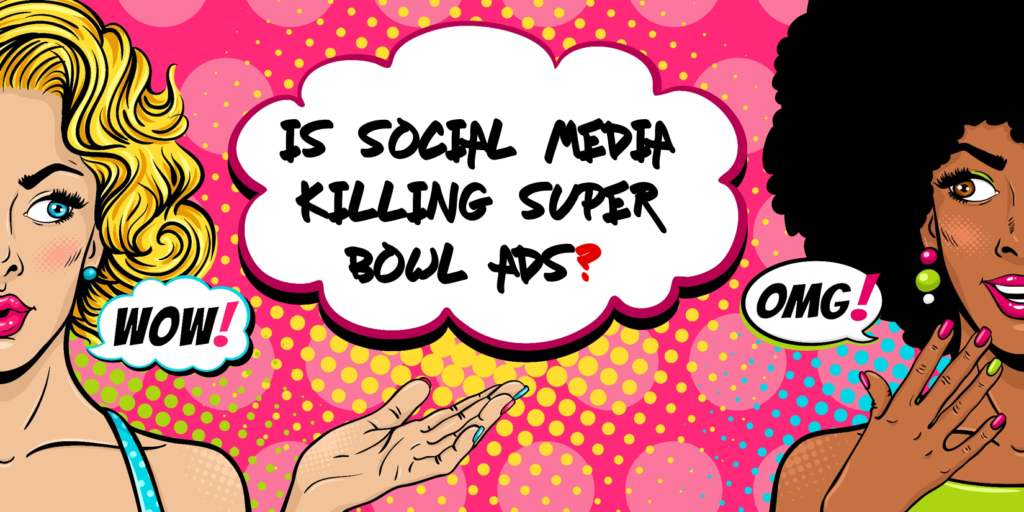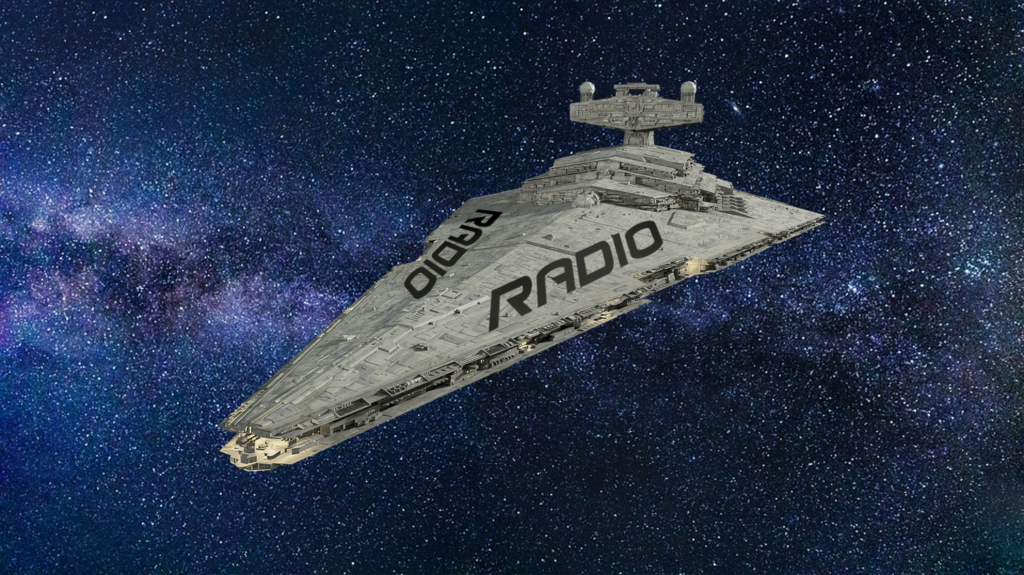
You saw what I saw Sunday night. A spectacularly boring Super Bowl (unless you live in the 617 or thereabouts, an unremarkable halftime show (even for Maroon 5 diehards), and the usual snark-filled commentary on Twitter that blathered non-stop before, during, and after the game.
At least, there were the Super Bowl ads.
Except they weren’t very spectacular or especially memorable either, generating almost no buzz yesterday in kitchenettes and around water coolers all over the world. But is that because this year’s crop of creative writers, producers, and celebrities were especially unimaginative, mundane and boring?
Or is it because Super Bowl ads have almost totally lost their element of surprise?
CNN had this to say about this year’s crop of commercials:
“While it’s popular to say ‘The ads were better than the game,’ they collectively weren’t, even in the midst of a low-scoring affair that didn’t produce a touchdown through three quarters.”
Wow, and we’re talking about a football game that was moving glacially, at best. The fact the commercials didn’t supply welcome relief to missed passes and failed running plays is a sad commentary.
It wasn’t that many years ago when you joined friends and family to watch the game, and you actually anticipated the ads – not just because there were some real gems, but because you never knew what was coming. You had the comfort of knowing agencies and their creative types poured their hearts and souls into creating a :60 masterpiece that would stand the test of time.
Whether it was that (in)famous Apple ad, “1984” or Mean Joe Greene giving his jersey to that kid in the Coke commercial, we can all remember wonderful Super Bowl ads in the past that made us laugh, touched our hearts – or both.
Not this year. And maybe that’s because marketers are forgetting what their commercials are supposed to accomplish in the first place.
The Drum’s Andrew Blustein quotes advertising executive John Cornette:
“The most interesting thing that is happening is that big brands aren’t relying solely on TV to advertise during and around the big game. More and more, they are leveraging social media and digital to connect and amplify their messages. This isn’t to say that TV and the big, epic, celebrity-laden Super Bowl spot is dead. It’s still very effective as a massive spark. But it’s not the only play.”
Maybe, but when most of those mega-expensive Super Bowl ads are pre-exposed all week long on social media, and then on TV news and entertainment shows, the in-game surprise factor is all but extinguished. I caught myself thinking, “Oh, here comes the Stella Artois ad with Jeff Bridges and Sarah Jessica Parker.” But like the old summer reruns of network TV shows, I had already seen this funny mashup earlier in the week – several times.
It was still worth watching, but certainly lost its buzz and impact due in part to its incessant exposure on social media.
Marketers have become so concerned about those “second screens” they’ve lost touch with the “first screen” – that big TV in the middle of the room that’s carrying the biggest football game in real time. That’s why you buy time in the Super Bowl. You know the largest TV audience of the year will be tuned in and paying attention RIGHT NOW – not binging on Netflix or watching the game later on a DVR.
So, why would you dilute your commercials by making sure millions have already seen them long before the National Anthem is sung and the coin is flipped?
Those of us in radio can relate. How many stations and personalities have gotten so caught up in their Twitter feeds and Facebook pages they’ve lost sight of the “Mother Ship” – that is, their real-time air sound? Live, in the moment radio – where listeners don’t know the next talk topic or what song is going to get played.

On Super Bowl Sunday, lost in the billions of dollars of ad spend, over the top creative, and pre-game buzz was the element of surprise. AdAge claimed only one commercial truly created a “WTF moment” – that bizarre Bud Lite spot that somehow morphed into a “Game of Thrones” promo. Slaying the Bud Light knight was about as inspiring and shocking as killing off Ned Stark in season 1 of “GoT.” The Wall Street Journal called it one of “the biggest and boldest marketing tie-ins” ever – and that’s part of why it was a standout. But the other reason it worked was because the spot was not leaked.
But that was about it. Many brands spent – and overspent – on celebrities and robots, but there were few moments of glee and joy in this year’s long Super Bowl stopsets. That’s because social media has effectively killed the Super Bowl ad surprise.
The Super Bowl has become like a modern-day high school reunion. Since the Facebook era, the mysteries of reunions are gone. You know what your old friends are doing – who’s had kids, gotten divorced, scored that big job, and even passed from this earth. There’s not a whole lot of drama or surprise when you know the ending.
I remember being at a Super Bowl party back in 2011 in Florida with a group of Detroiters, as well as Motor City ex-pats who had relocated to the sunny south. In the midst of the action, a commercial came on that literally stopped the room, and when it was over, it was greeted with tears and applause – something that just doesn’t seem possible now.
https://www.youtube.com/watch?v=SKL254Y_jtc
This brilliant commercial was packed with drama, coined an amazing tag line, and featured the celebrity presence of Eminem. “Imported From Detroit” captivated largely because it was powerful and surprising, largely because it wasn’t seen by millions on YouTube the previous week, it wasn’t dissected by advertising experts on CNBC, and it didn’t make the rounds on Facebook or Twitter before the game.
No one saw it coming.
And that’s what radio programmers can learn from the spontaneity the Super Bowl has so clearly lost. While once the only real-time sporting event where viewers actually looked forward to the commercials, most of us now show up at these annual parties and look forward to the food.
There are simply times when content creators need to hold things back, think about what elements can surprise, amaze, and enchant, and regain an occasional flair for the dramatic.
When you think about some of your fondest memories of radio – whether something Howard Stern said, a surprise concert announcement, or a special unannounced studio guest – chances are, you never saw them coming.
The Super Bowl has been trying too hard…for a long time now. And while the game’s ratings may still be impressive (although Super Bowl LIII was down), its well-heeled advertisers cannot be as happy with the results of their efforts and their dollars as they were back in the 80s and 90s.
That halftime show had some fans reminiscing about Up With People…and Janet Jackson. And I noticed that at our party, people didn’t stop gabbing, schmoozing, and eating during the commercials. Expectations may have hit an all-time low.
Just as the NFL needs to rethink many things in its off-season – besides that horrific non-call in the Saints/Rams game – advertisers, marketers, brand managers, and programmers need to go back to the drawing board, too, and ask themselves what result are they looking for from a one-and-done ad campaign that costs nearly 8 figures.
Is it better to have fans sharing your commercial socially ahead of the game or is there more magic when there’s surprise and serendipity during the Big Game?
Clearly, technology has disrupted Super Bowl ads. And by diving into social media with both feet, marketers may be missing the true, word-of-mouth viral opportunity that was once part of the game’s magic.
We’re talking about ads that once delighted millions of consumers. Sunday’s viewers could have used a good laugh from the commercials.
Yesterday, I saw cable news headlines that asked whether Tom Brady could now be compared to Michael Jordan. Perhaps, but today’s Super Bowl ads were a lot better in the Lombardi era.
Pass the cheese dip.
- How Will Radio Fare In The Battle For The Fourth Screen? - April 3, 2025
- Like A Pair Of Old Jeans - April 2, 2025
- What’s Fair Is Fair - April 1, 2025




Spot On. But non-event. Liked Bud/GOT. Got the 10 point spread right but no 10’s in the commercial dept. However, as 617 since college in CT & raised in NYC, The Patriots are The G.O.A.T.
No pushback from me. Here in the 313, we’re just trying to win our second playoff game.
Idk fred….the whole reminiscing tone harkens to the ‘get off my lawn’ demo…I remember when stations had 1 pd, prod dir AND a copy writer…but those days are gone and ain’t never coming back…such as pre social media days. I still think Chunky milk garnered the most response in my house…but that said the pre roll of spots on social media and the fact the game fortnite gathered 10 mill for a dj ‘concert’ proves the old days are just that…..old! Pat’s are the GOAT! Another 617-er heard from
And “Blowin’ In The Wind” for Budweiser just struck me as hollow and mis-cast. What’s wrong with Aeromsith? Kyle, thanks for the comments about an institution that may be a little shaky ground. And it’s getting hard to argue with the Pats being a dynasty and Brady being the NFL’s GOAT.
I watch the game for the spots. Yuck. Chunky milk was grossly funny except when you realize that Mint is now associated with something just gross. And the WaPo grandstanding pegged the needle on pukeworthy. What I really noticed was the large presence of CBS program promos. It looks like unsold inventory to little old me, and hearing that some of these genius corporate giants were trying to straddle a fence that the Pepsi Refresh fiasco gored itself on just makes that scenario real.
Maybe that chunky milk spot (Mint Mobile) was more important than I thought. And you’re right about all those CBS promos – seemed more than usual. And I forgot about that Pepsi Refresh thing. Appreciate the perspective on “The Big Game.”
Social media isn’t killing SB adds. Political correctness is. The writers who previously provided the hilarity in those spots, are so afraid to offend people today, they don’t know what to write. It’s the same as the lame monologue Andy Samberg and Sandy Oh had to deliver at the Golden Globes. It will all come back around eventually. Just like everything else…it’s cyclical.
Had not thought of that, but clearly, there’s a lot of turf to avoid these days. Thanks for the thought, Matt.
Matt , you lost me at “Sandy” Oh. (she will always be Sandra). And I call BS on political correctness. The best ad writers are creating for the product, not the laughs or the “will I score a 10 on the Ad-O-Meter”. The Chrysler-Eminem ad worked because it was about the product and where it comes from. the Paul Harvey-Farmer ad was about the product and how they work. If you are thinking about your Ad Score, then you are not creating.
Barbara, thanks for this. You could specifically reply to Matt so the thread follows. But in any case, a strong comment & glad to hear your voice.